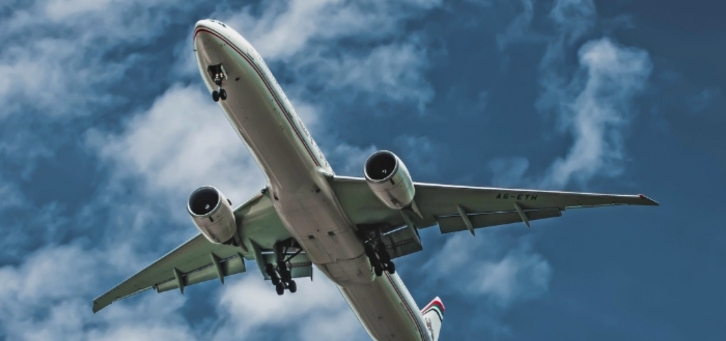As aviation professionals, it’s crucial to be aware of the HIMS (Human Intervention Motivation Study) program, especially if you or someone you know is facing alcohol-related challenges that may affect your ability to fly. This program plays a pivotal role in helping aviation enthusiasts overcome addiction issues and return to the skies safely. In this blog post, we’ll delve into the airman’s responsibilities when an application is deferred due to an alcohol-related traffic incident and explore the key aspects of the HIMS process.
Airman’s Responsibilities
If your FAA medical application is deferred due to an alcohol-related traffic incident, the FAA will require you to take specific steps:
- Provide Essential Documentation:
- A detailed personal statement regarding your past and present patterns of and future plans for alcohol or drug use.
- A complete copy of your current driving record in any state where you’ve held a driver’s license in the last decade.
- Copies of any court records and arrest reports related to the incident(s), including military records if any events occurred while you were in the U.S. armed forces.
- Obtain a Substance Abuse Evaluation:
- You may undergo a substance abuse evaluation conducted by an addictionologist or addiction psychologist/psychiatrist. In general, the FAA prefers an evaluation conducted by a professional familiar with aviation standards. Although, this is not always necessary.
HIMS Program Overview
The HIMS program, short for Human Intervention Motivation Study, was initiated in the mid-1970s to address the need for a specialized alcohol recovery program for professional pilots. It is recognized as the “Gold Standard” for airline pilots but can be customized to fit a pilot’s specific diagnosis and aviation circumstances.
The program’s core premise is that substance abuse or dependence is a disease, not a moral weakness. Therefore, it requires standardized diagnostic tools and treatment methods. When the FAA decides whether someone meets criteria for substance abuse or dependence, they are using criteria under FAR 67.107(b) and 67.107(a)(4). These are what we call regulatory criteria. These criteria differ from clinical criteria, which can be found in reference manuals for physicians, such as the Diagnostic and Statistical Manual (DSM-5). The regulatory criteria have a higher standard than clinical criteria. The upshot is that a pilot can be healthy from a clinical standpoint but ineligible to hold a medical certificate from a regulatory standpoint. This leads to frustration from both the pilot and the pilot’s treating physicians.
Once a pilot is deemed to be a substance abuser or substance dependent under 67.107(b) or 67.107(a)(4), the pilot is deemed to be ineligible to hold a medical certificate. The pilot is then subject to the following clause in 67.107(a)(4): “established clinical evidence, satisfactory to the Federal Air Surgeon, of recovery…” The effect of this clause can not be understated. This clause alone grants the FAA the authority to require pilots to participate in the HIMS program. It also stands for the proposition that once a pilot has been found to be a substance abuser or substance dependent by the FAA, passage of time along will not make a pilot later eligible to hold a medical certificate. The pilot has two options: appeal the decision of substance abuse or substance dependence or undergo treatment. We recommend pilots talk to us about which path to take. We often recommend taking both of these paths simultaneously, as an appeal of a decision can be a way to expedite slow processing times at the FAA.
Key Steps in the HIMS Process
- Substance Abuse Assessment: Pilots undergo an assessment by professionals with experience in addiction medicine and knowledge of aeromedical standards.
- Treatment Program: Typically, airline pilots undergo a 28-day inpatient treatment program. Some pilots may only need to do intensive outpatient treatment. General aviation pilots may follow a tailored treatment plan direct by the FAA.
- Peer and Company Sponsorship: Pilots should have a peer sponsor and, if possible, a company sponsor during treatment.
- Follow-Up and AA Involvement: Pilots engage in a three-month intensive outpatient program, including regular Alcoholics Anonymous (AA) attendance.
- Psychiatric and Neuropsychological Evaluations: Pilots receive evaluations by HIMS-trained addiction specialists to assess cognitive functioning and recovery stability.
- Flight Physical Examination: The pilot undergoes a flight physical examination and submits all records to the FAA.
- Ongoing Monitoring: Pilots are monitored for a specified period, which may extend beyond the FAA’s two-year requirement for documenting sobriety.
The HIMS program can be the only path forward for some aviation professionals facing substance abuse challenges. By following its structured approach to recovery and rehabilitation, individuals can regain their careers and contribute to safer skies. However, it will be a time-intensive and resource-intensive process filled with delays and metaphorical landmines.
If you or someone you know requires assistance with a deferred or denied FAA application due to alcohol-related issues, reach out to Barnett Law Offices. Our experienced aviation attorneys are here to help you navigate this crucial process. Contact us at (800) 578-5512 or through our contact form for a confidential consultation. Remember, recovery is possible, and the HIMS program can be a lifeline for those in need.



